Where to see the most beautiful daffodil displays in London and South East England
Calling all daffodil lovers! Some see these bright yellow flowers as dull and repetitive, but to me, they are a cherished sign that spring is coming. From the moment that £1 bunches of daffodils start filling the shelves at the supermarkets in January to the moment when St. James’s Park springs into full golden bloom, these flowers bring me nothing but joy. If you’re also like me, and start to feel FOMO about seeing every possible spring flower, then this guide is for you—here are the best places to see daffodils in London and the South East.
This post is part of a larger series about London in the Spring, so be sure to read more about each spring flower and where to see it in London.
St James’s Park
Central London
St James's Park, located in the heart of London, is a great place to see daffodils in the spring. This is my go-to place for daffodils in March. I will go straight there on the first sunny Saturday around this time. There are swathes of daffodils of different varieties all around the park and it is one of the most idyllic picnic locations I can imagine.
The history of daffodils at St James's Park dates back to the Victorian era, when the park was redesigned by John Nash, a famous architect and landscape designer. Nash's redesign included the creation of the "Daffodil Walk", a path lined with thousands of daffodils that bloom each spring. The daffodils were originally planted in the park to cheer up Londoners during the long, dark days of winter and to create a beautiful display for visitors to enjoy. The tradition of planting daffodils in the park has continued over the years, and today, the park is home to tens of thousands daffodils that bloom between late February and early April. The Daffodil Walk is one of the most popular attractions in the park during spring and a must-see for visitors to London.
Hampton Court Palace
South West London
Hampton Court Palace, located in the London Borough of Richmond upon Thames, is a popular tourist attraction that is steeped in history. In the spring, the palace is adorned with a beautiful display of daffodils that bloom throughout its gardens. The gardens at Hampton Court are vast, and the daffodil displays in The Wilderness are a highlight for visitors who come to see the stunning floral spectacle. With tens of thousands of bulbs planted in the gardens, there are endless photo opportunities and beautiful walks to be had. In addition to the daffodils, visitors can also enjoy other spring blooms such as hyacinths and bluebells. It is also one of the best places in London to see tulips.
Chiswick House
West London
Chiswick House is a Palladian villa in London with extensive grounds, and is one of the most elegant gardens in London. Daffodils cheer the gardens in March and provide beautiful scenery for the garden’s follies. It’s worth visiting the interior of the house to see the classic interior design, and Chiswick House should always be paired with a walk along Chiswick Mall on the River. At this time of year the magnolia trees will be in bloom as well, bringing beautiful pink blossoms to the riverside.
Nymans
Sussex
Nymans is a National Trust property that is close to my heart and I love visiting in every season. In the spring there is a daffodil walk, but daffodils also fill the more formal gardens near the house. I visited one perfect day in March when the daffodils were swaying and white magnolia blossoms gently floating down over them — truly magical.
The history of daffodils at Nymans, a National Trust property located in West Sussex, also dates back to the Victorian era. The garden was developed by the Messel family, who owned the property during the late 19th and early 20th centuries. The Messels were passionate about horticulture, and during the early days of Nymans, they began to experiment with different plants and flowers, including daffodils. The daffodils at Nymans are believed to have been planted in the garden around the turn of the century, and over the years, the collection has grown to include over 60,000 daffodils that bloom between mid-February and mid-April.
Cliveden
Berkshire
Cliveden is an impressive stately home turned luxurious hotel located in Berkshire. The beautiful gardens are managed by the National Trust, offering visitors the chance to explore the stunning parkland. The daffodil displays at Cliveden are a must-see, with the 'daffodil valley' showcasing an array of magnificent blooms. In addition to the valley, potted daffodils allow visitors to appreciate the variety of daffodils found at Cliveden. I love the formal garden, which features daffodils (and later tulips) in ornamental beds framed by bird-shaped topiaries. It’s quirky and unique, like something out of Alice in Wonderland.
Hever Castle
Kent
Hever Castle, located in Kent, is a fascinating heritage site that has a rich history dating back to the 13th century. The castle is perhaps best known for being the childhood home of Anne Boleyn, the second wife of King Henry VIII. Today, visitors can explore the castle's beautifully preserved rooms and learn more about the life of this historical figure. The castle and estate have been owned by many different families over the years, but in the early 20th century, it was purchased by the American businessman William Waldorf Astor. Astor was a keen gardener and horticulturist, and he introduced many new plants and flowers to the castle's gardens, including daffodils which can still be seen blooming today.
Sissinghurst
Kent
The garden was created by Vita Sackville-West and her husband Harold Nicolson in the early 20th century. Vita was an accomplished gardener and writer, and she is credited with introducing daffodils to the garden. Sissinghurst is known as one of the most famous gardens in England and is a must-see for visitors during spring. Sissinghurst is an excellent example of an English country garden, with a series of garden "rooms" that are carefully designed to create a sense of intimacy, beauty, and tranquility.
Igtham Mote
Kent
Ightham Mote is a National Trust property located in Kent, it is a 14th-century moated manor house that offers a glimpse into medieval life. The ruins of the moated manor house against the spring blooms is very picturesque. The 19th century house is beautiful as well and worth visiting to see the interiors. The beautiful daffodil fields bloom in the early spring, and I find the orchard with the swathes of white daffodils particularly beautiful.




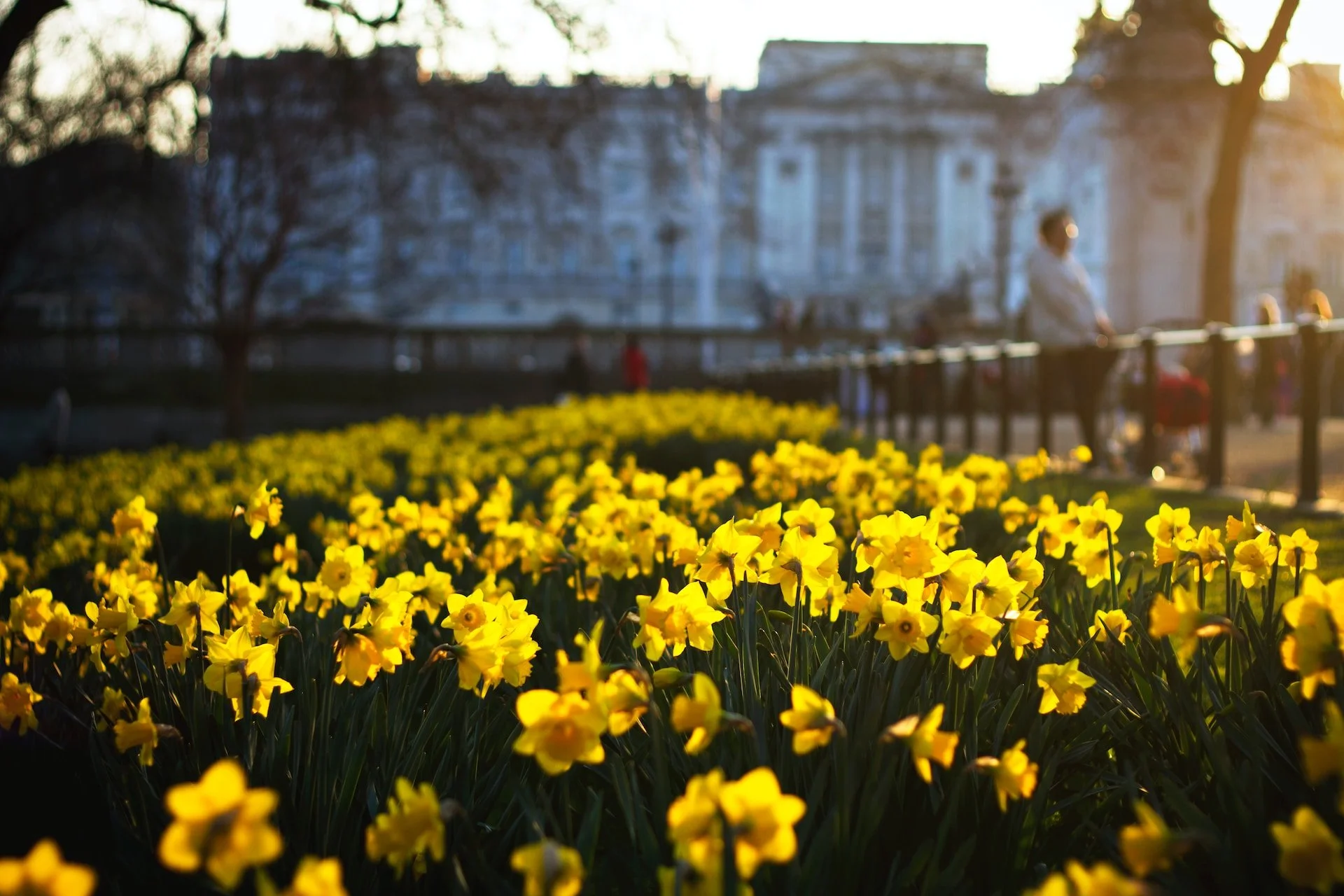




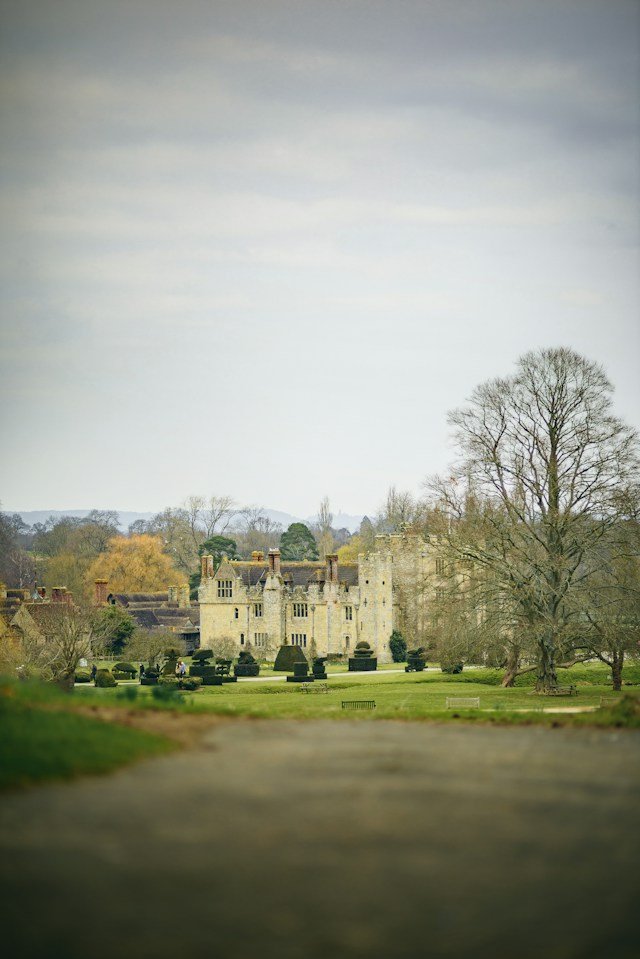

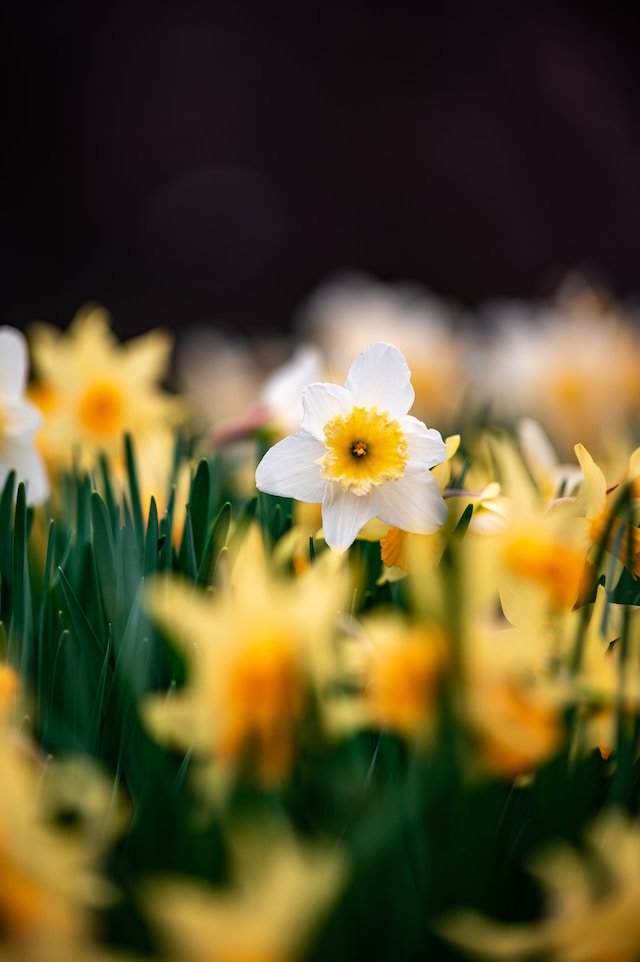
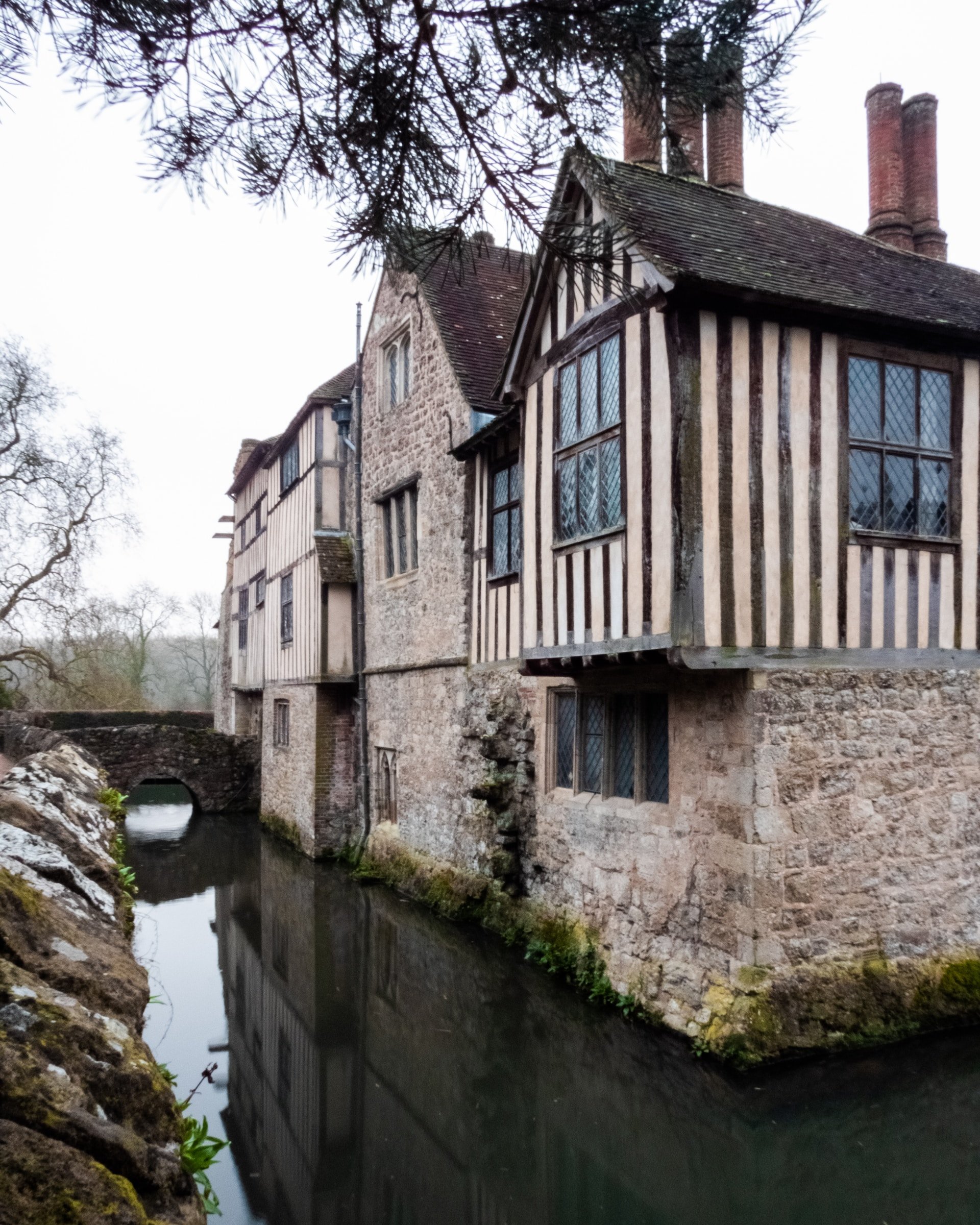
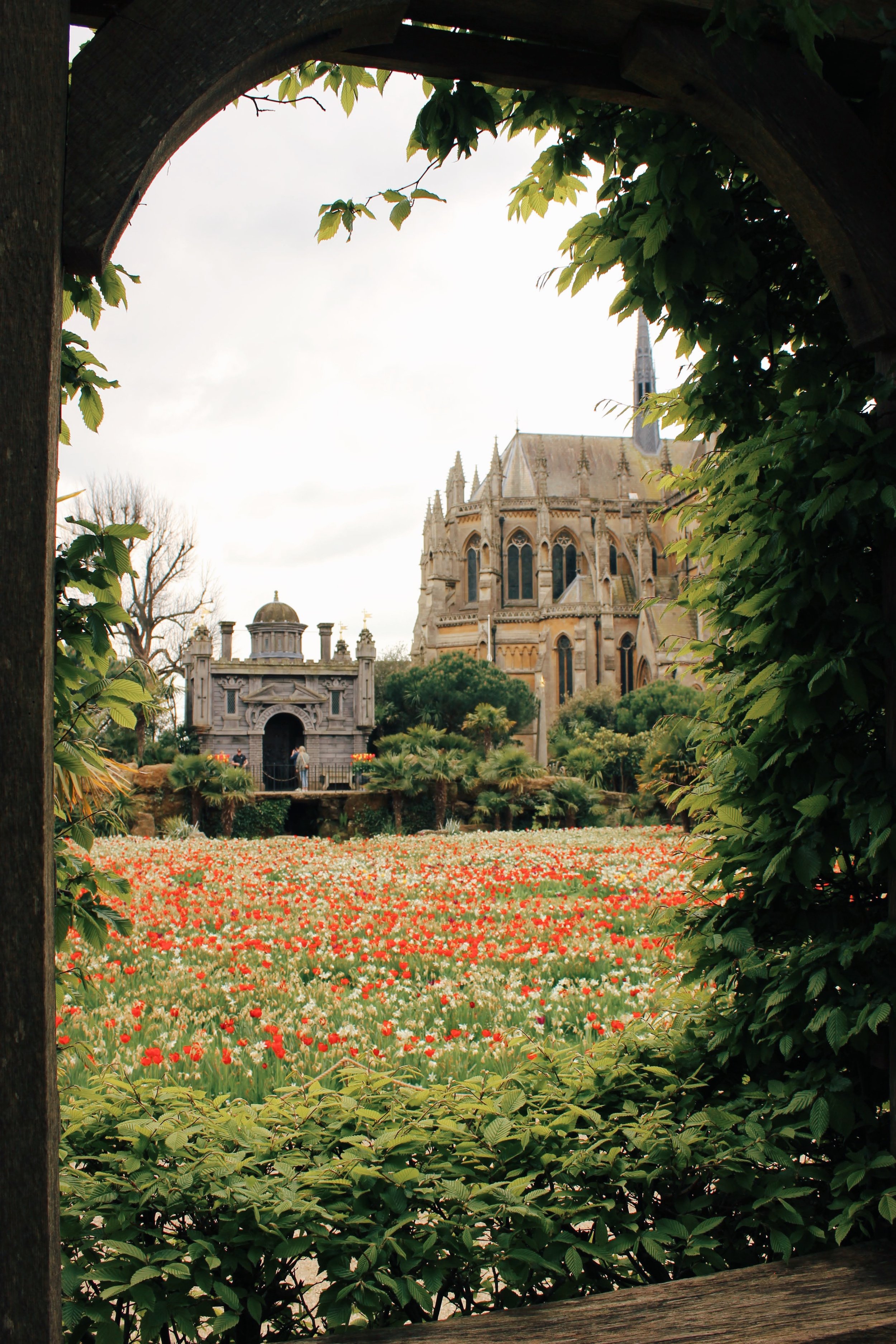

If you’ve got wisteria hysteria, here’s exactly where to go to see the best wisteria houses in London.